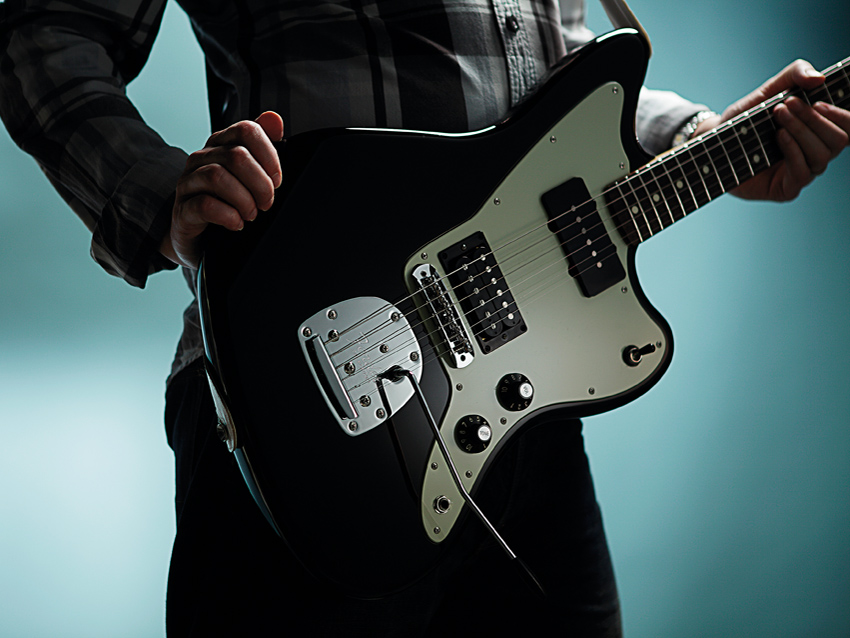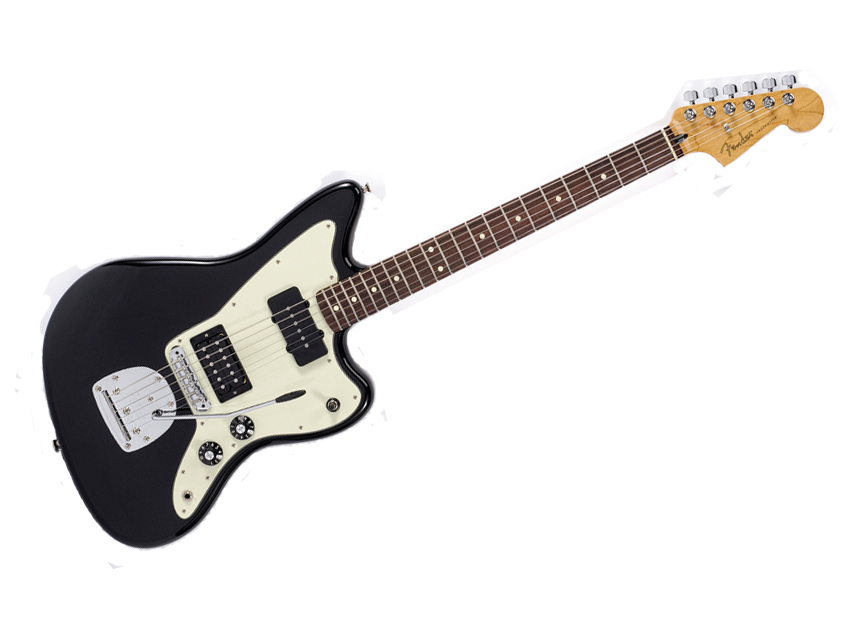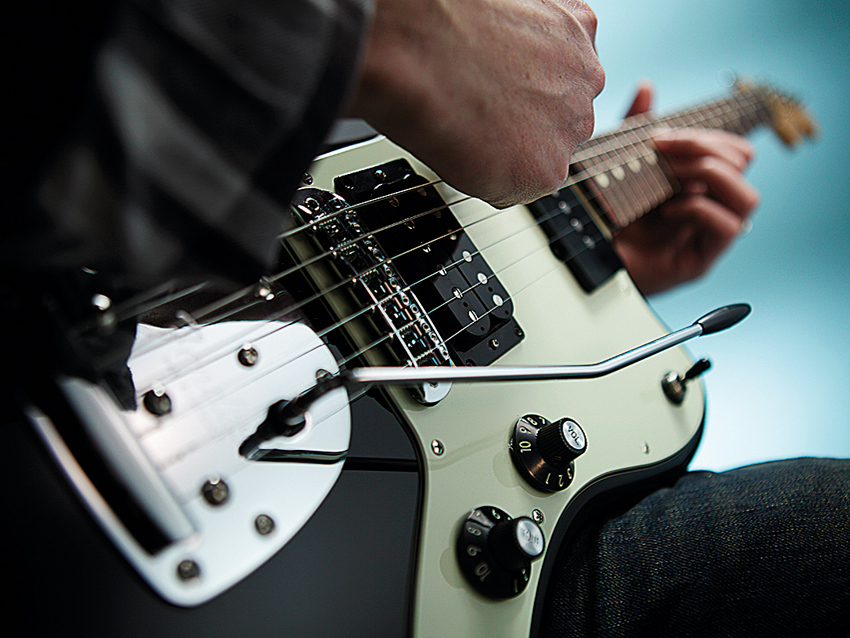MusicRadar Verdict
Pimped it may be, but the quirks of the original Jazzmaster remain. It's up to you to decide if that's good news or bad…
Pros
- +
Old-school vibe with some modern beef.
Cons
- -
The 'classic' vibrato and bridge.
MusicRadar's got your back

Blacktop Jazzmaster HS

Blacktop Jazzmaster HS

Blacktop Jazzmaster HS
There was a time when Fenders had single-coil pickups and Gibsons had humbuckers, and people were okay with that. You paid your money, took your choice. Then hard rock happened and suddenly everyone wanted more power from their pickups.
By the early 1970s, the chisels were out and humbuckers were in, no matter what you played. Fender got the message and released the twin humbucker-equipped Tele Deluxe and Thinline in 1972.
"'HS' equals humbucker and single-coil, so you get an open-coil humbucker paired with a classic Jazzmaster neck pickup."
Later in the decade, tinkerer extraordinaire Edward Van Halen drove the point home by forcing a humbucker into the bridge position of a 'Strat-style' body and, well, the rest is history.
The legacy of that early tonal cross-fertilisation can be seen in these new Fender Blacktop guitars. The range consists of four classic Fender models - Telecaster, Stratocaster, Jazzmaster and Jaguar - each modified with humbucking pickups and a bunch of other features that include bolt-on maple necks with a gloss urethane finish, a 241mm (9.5- inch) fingerboard radius, medium jumbo frets and 'skirted' amp-style knobs.
The fact that the Blacktop Series is being marketed with downloads of sticker designs and stencils is a good clue to the type of player Fender is hoping to snare with this range. Young punk, metal and indie guitarists who wouldn't have considered a Fender as 'their thing' but might be tempted by the extra firepower on offer.
But where does that leave the rest of us?
Build
It's really only the control knobs that tip you off that this Jazzmaster HS is part of the Blacktop Series. This is because the pickup layout is different to the other three guitars in the range.
'HS' equals humbucker and single-coil, so you get an open-coil humbucker paired with a classic Jazzmaster neck pickup. Both units are (Seymour) Duncan Designed.
First unleashed in 1958, the original Jazzmaster had the longer 648mm (25.5-inch) scale length of the Tele and Strat, but shared the same floating vibrato with its Jaguar sibling.
Oddly, Fender has chosen to include this temperamental unit on the Blacktop Jazzmaster and almost immediately we begin to experience the familiar rattles and squeaks for which it's notorious.
We also notice that the bridge humbucker alignment is a bit off, with the high E string not quite centred on its polepieces. However, a quick run through our amp confirms that, sonically at least, the alignment issue doesn't cause any discernible loss of signal or string balance.
Our Blacktop Jazzmaster has superb playability thanks to the modern spec medium jumbo frets and fingerboard radius. The simplified control layout makes it a bit more user friendly than the original vintage model.
The Jazzmaster HS is responsible for the only departure from the £539.99 asking price of the Blacktop range, with the three-colour sunburst version coming in at £574.99, which is still hardly a fortune.
Sounds
The guitar was set up perfectly straight from the box. Heavier strings would be good, but that's a personal choice. Playability is uniformly excellent, with a comfortable action and easy string bending right up to the top frets.
The Jazzmaster offers some cool tones, too. Thanks to that big old vibrato, the guitar almost has a hollowbody quality to its tonal makeup. You'll have to try it to understand what we mean.
The Duncan Designed bridge humbucker sounds brighter than the bridge units on the other guitars. Ironically, given the whole high-octane nature of this series, the neck single-coil on the Jazzmaster is actually the guitar's best setting.
A clean tone, some reverb, jazzy chords and a gentle wobble of the vibrato arm and you'll be in '50s heaven. Whack on some distortion and fans of Sonic Youth and Nirvana will be just as happy.
Some will see the Blacktop Series as a cynical marketing ploy designed to squeeze a bit more juice out of some very well-established designs.
This is a good guitar in its own right, but it just doesn't feel like it's part of the Blacktop series to us.
For starters, the usual problems inherent with its bridge and vibrato put us off it a bit and sent us scurrying back to the other three guitars. You really have to try the Jazzmaster for yourself to form your own opinion on it.
There's no doubt that Fender is hoping to win some new fans with the Blacktop Series. That may or may not happen, but there's also something here for existing Fender fanatics.
The addition of humbuckers hasn't diluted what makes this classic Fender design great; instead, it's thrown up a bunch of great new tones.
The gene-splicing experiments that tone fiends inflicted on innocent guitars back in the day are now available as standard. And that means the chisel can stay in the toolbox where it belongs.
“I used everything I knew about music”: How Green Day exceeded expectations with their most ambitious song
YouTube just added AI tools that makes musicians, library music and video editors redundant
“Every one of them said yes without hesitation": Hank Marvin and Roger Taylor have just remade a '60s classic for charity









